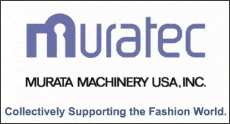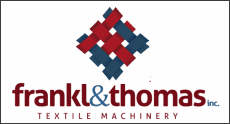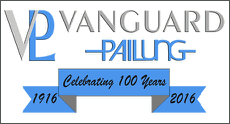
Posted October 23, 2017
SPARTANBURG, S.C. – Floorcovering manufacturer Milliken has completed a new LEED v4 credit pathway that addresses material traceability and transparency in the supply chain: LEED v4 MR credit Building Product Disclosure and Optimization – Material Ingredients (Option 3).
The next tier of material transparency, this stringent credit option dives into the chemical makeup of supplier materials for an elevated understanding of their resulting human and environmental health impacts.
Milliken is the first flooring manufacturer that can contribute to this credit option, and it applies specifically to Milliken’s Live Oak flooring operations in LaGrange, Ga. For a new build or renovation project team to qualify for this LEED v4 point, at least 25 percent of the total material purchased for the project must qualify as “optimized” per Option 2 or 3 of the credit. Floorcovering can easily account for this requirement in a renovation.
The new credit is designed to reward manufacturers who optimize supplier material chemistry, which begins with a deep understanding of what is inside their current products. The rigorous process includes:
-
Formalizing a plan to optimize supplier chemistry;
-
Understanding 99 percent by mass of all product contents, such as nylon yarn, dyes and backing materials;
-
Understanding the chemical composition and associated hazards in a supplier’s product;
-
Notifying suppliers if hazardous ingredients are found in formulations per Table 1 – Globally Harmonized System (GHS) for Hazard Criteria by Endpoint for Option 3 Screening; and
-
Confirming suppliers have proper procedures in place to handle any chemicals with GHS-recognized hazards.
“Single indicators, such as recycled content, once defined green products – but everything is much more integrated than a single attribute,” said Wes Sullens, director of codes and technical development for the U.S. Green Building Council. “We know that being truly sustainable requires a holistic approach, diving into multiple product aspects from manufacturing methods to transforming the supply chain by identifying and communicating potentially hazardous materials. Credits in LEED v4 – and the Material Ingredients Option 3 credit in particular—are intended to reward manufacturers like Milliken that are taking on this difficult challenge.”
The LEED v4 Material Ingredients Option 3 credit raises the bar for material transparency by moving beyond disclosure to manufacturer and supplier optimization. By encouraging accurate material transparency, the LEED v4 Material Ingredients Option 3 credit recognizes healthier building products and work environments. The result empowers the architecture and design community to make better decisions as they pursue LEED v4, WELL Building Standard, Google Portico or other green building requirements.
When piloting the credit, Milliken exceeded the minimum credit standard to understand more than 99 percent of the materials used in 100 percent of Milliken modular carpet collections available in North America, covering 96 percent of its suppliers for products in the Americas.
“Thanks to our trusted suppliers, we were able to go beyond the requirements for Options 1 and 2 of this credit and advance our understanding of material transparency beyond what the industry once deemed possible,” said Philip Ivey, global sustainability leader for the Milliken floorcovering division. “Part of piloting a new green building certification credit is helping to determine where the credit should be taken next – including whether standards should be elevated.”
According to Ivey, having a third party available to screen supplier ingredients was imperative to completing the credit – and to evaluate Milliken’s current products as the company continues to improve its flooring with more green chemistry.
Collaboration with WAP Sustainability, GreenCircle
Milliken partnered with sustainability consulting firm WAP Sustainability to help suppliers share confidential and proprietary information in a safe and controlled manner. The firm’s Value Chain Chemical Management (VCCM®) service helped Milliken collect, aggregate and screen chemical and ingredient information from its suppliers.
Collaboration with WAP Sustainability helped Milliken develop internal processes and procedures to make human health evaluations of ingredients a core business practice. It also prepared Milliken to meet future customer demands for chemical transparency documents for new floor covering collections, by using a system to manage the exchange of information between Milliken and its suppliers. Milliken is now able to fast forward to optimization discussions by partnering with suppliers on chemicals of concern.
According to William Paddock, managing director of WAP Sustainability, Milliken excels at focusing on the intent behind requests for chemical and ingredient information, which Milliken knows are now a must in the architecture and design industry.
"The Option 3 certification for Milliken simply confirmed what they were already doing well,” said Paddock. “Milliken has a robust system in place to collect, screen, assess and disclose suppliers’ chemical and ingredient information to customers who ask. Milliken has the processes and procedures in place, as well as senior leaderships’ support, to encourage supplier transparency as a prerequisite for conducting business with Milliken.”
For an additional element of accountability, Milliken engaged with GreenCircle Certified, LLC to third-party verify the entire credit process.
“In order to achieve Option 3 of this credit, manufacturers are encouraged to engage in more significant conversations and to develop a chemical management system with their suppliers,” said Tad Radzinski, certification officer of GreenCircle Certified. “Milliken’s participation in this pilot credit demonstrates their commitment to communicating their values throughout the supply chain, positioning Milliken as a leader in the movement towards better and healthier products.”
“The supply chain is at the heart of LEED v4,” Sullens said. “We look forward to seeing how this new Option 3 credit translates into other areas beyond materials and ingredients, such as quality and social responsibility considerations when sourcing materials.”
Milliken strives to push the limits of what sustainability can be in each market the company serves. This extends from environmentally friendly attributes to taking steps to provide customers with transparent assurance in the products with which they choose to surround themselves.
Source: Milliken
Milliken completes LEED v4 pathway to address material transparency













